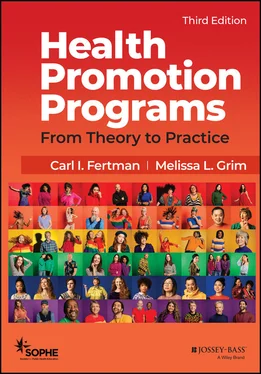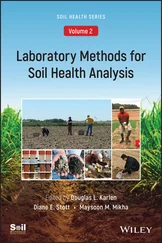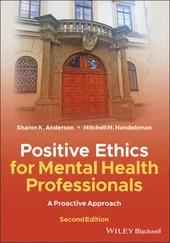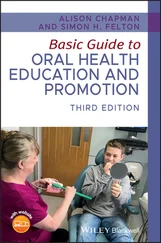(SOPHE) Society for Public Health Education - Health Promotion Programs
Здесь есть возможность читать онлайн «(SOPHE) Society for Public Health Education - Health Promotion Programs» — ознакомительный отрывок электронной книги совершенно бесплатно, а после прочтения отрывка купить полную версию. В некоторых случаях можно слушать аудио, скачать через торрент в формате fb2 и присутствует краткое содержание. Жанр: unrecognised, на английском языке. Описание произведения, (предисловие) а так же отзывы посетителей доступны на портале библиотеки ЛибКат.
- Название:Health Promotion Programs
- Автор:
- Жанр:
- Год:неизвестен
- ISBN:нет данных
- Рейтинг книги:5 / 5. Голосов: 1
-
Избранное:Добавить в избранное
- Отзывы:
-
Ваша оценка:
- 100
- 1
- 2
- 3
- 4
- 5
Health Promotion Programs: краткое содержание, описание и аннотация
Предлагаем к чтению аннотацию, описание, краткое содержание или предисловие (зависит от того, что написал сам автор книги «Health Promotion Programs»). Если вы не нашли необходимую информацию о книге — напишите в комментариях, мы постараемся отыскать её.
Health Promotion Programs: From Theory to Practice
Health Promotion Programs: From Theory to Practice
Health Promotion Programs — читать онлайн ознакомительный отрывок
Ниже представлен текст книги, разбитый по страницам. Система сохранения места последней прочитанной страницы, позволяет с удобством читать онлайн бесплатно книгу «Health Promotion Programs», без необходимости каждый раз заново искать на чём Вы остановились. Поставьте закладку, и сможете в любой момент перейти на страницу, на которой закончили чтение.
Интервал:
Закладка:
Collaborations Focused on Race and Equity
Incorporating racial equity into California’s state-level agency policies, practices, and culture, Capitol Collaborative on Race & Equity (CCORE) is a community of nearly 30 California State government agencies, including education, health, social services, transportation, corrections and rehabilitation, financial management, natural resources, and others, working together since 2018 to learn about, plan for, and implement practices that embed racial equity approaches in state government. The public/private structure of CCORE helps accelerate broad system-wide changes. CCORE implements a commitment by California’s Health in All PoliciesTask Force to increase the capacity of State government to advance health and racial equity. In addition to the community of practice, CCORE offers two capacity building components: 1) a training program for State government entities, and 2) a staff team that provides technical assistance and support to the CCORE community (Capitol Collaborative on Race & Equity: https://sgc.ca.gov/programs/hiap/racial-equity).
Actions Using Healthy People 2030 to Advance Health Equity and Social Justice
Healthy People 2030 places a stronger emphasis on well-being and social determinants of health. Deliberately it calls out current and historical racism, injustice and other forms of discrimination as root causes of poor health, and recognizes that until those factors are addressed, health disparities will persist. Healthy People 2030 approaches social determinants through education access and quality, economic stability, social and community context, neighborhood and built environment, and healthcare access and quality.
Leading Health Indicators
Healthy People 2030 objectives are intended to inform action toward improving health and well-being. These objectives—known as Leading Health Indicators(LHIs)—help organizations, communities, and states across the nation focus their resources and efforts to improve the health and well-being of all people (U.S. Department of Health and Human Service, n.d.). The indicators are a select set of objectives on high-priority health issues and challenges. While all of Healthy People 2030 ’s objectives are important, the LHIs are chosen to draw attention to those that have the highest potential for impact.
LHIs are organized into five distinctive topics, including: 1) health conditions (e.g., cancer, diabetes, infectious disease); 2) health behaviors (e.g., family planning, physical activity, vaccination); 3) populations (e.g., infants, LGBTQ+, people with disability); 4) settings and systems (e.g.,environmental health, health policy, housing); and 5) social determinants (e.g., education access and quality, neighborhood and built environment, social, and community context). However, since LHIs focus on upstream measures, many factors that contribute to health inequity and social injustice cut across these five priority topics and specifically address social determinants of health, health disparities, and health equity. For instance, Healthy People 2030 includes objectives on housing affordability, food security and hunger, safe and active transportation, education access and quality, better employment conditions and economic stability; as well as creating neighborhoods and environments that promote health and safety. Such objectives are achieved through community engagement and coalition building across sectors (e.g., housing, business, transportation, healthcare, etc.).
Framework to Address Health Equity and Social Justice
Many communities use the Healthy People framework to address health equity and social justice. Washington DC Department of Health initiative to address health equity in the community (Figure 2.6) is drawn from Healthy People . The DC Department of Health monitors nine drivers: education, employment, income, housing, transportation, food environment, medical care, outdoor environment, and community safety. Because of their individual impact, but especially given their interconnectedness, the nine key drivers provide the main framework that collectively engineer how health is created outside of traditional healthcare and public health. Together, they illustrate the importance of social and structural determinants, which, intentionally or otherwise, produce persistently inequitable health outcomes (District of Columbia Health Department, 2020).
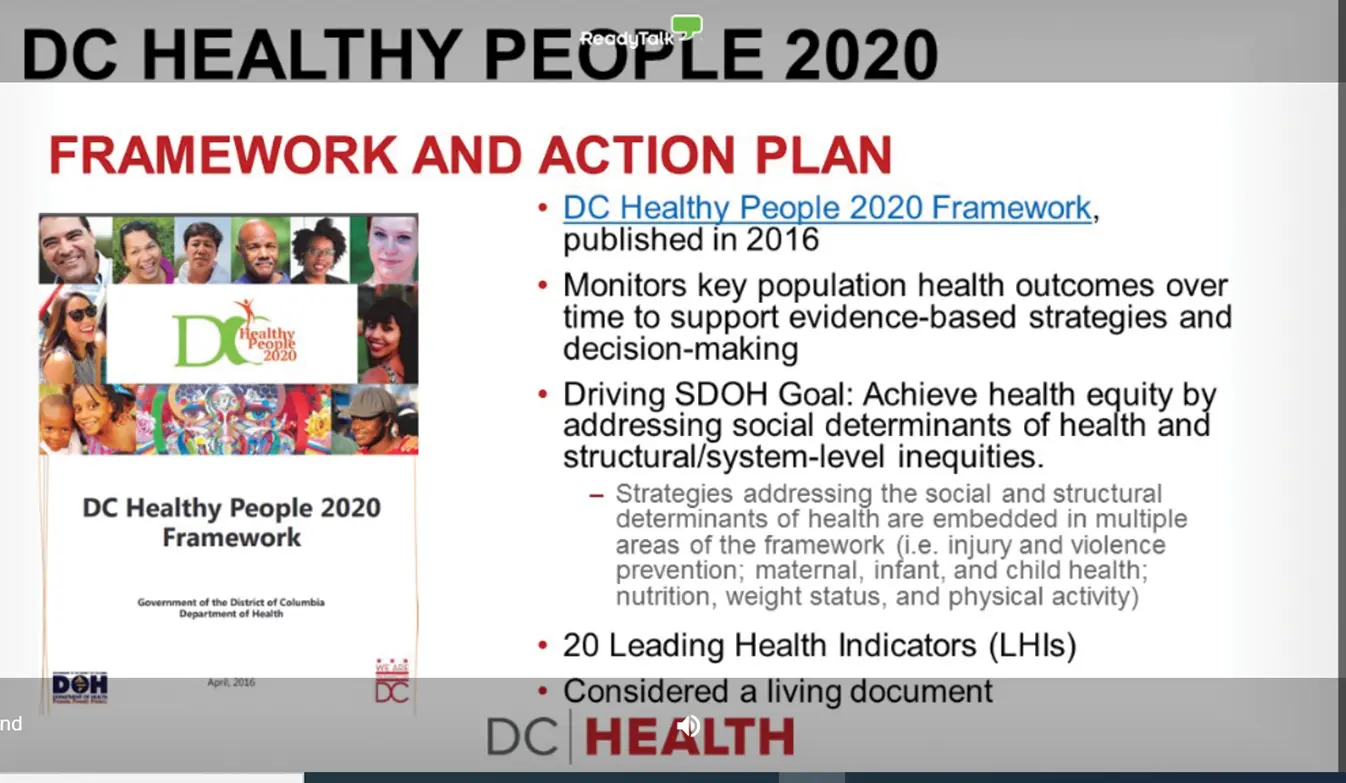
Figure 2.6 DC Healthy People 2020 Framework and Action Plan to Achieve Health Equity
Source : DC.Gov
LGBTQ+ Individuals Have Special Health Concerns
A goal of Healthy People 2030 is to improve the health, safety, and well-being of LGBTQ+ individuals. LGBTQ+ encompasses all races and ethnicities, religions, and social classes (Office of Disease Prevention and Health Promotion, 2020). Eliminating LGBTQ+ health disparities and enhancing efforts to improve LGBTQ+ health are necessary to ensure that LGBTQ+ individuals can lead long, healthy lives. The many benefits of addressing health concerns and reducing disparities include reductions in disease transmission and progression; increased mental and physical well-being; reduced healthcare costs; and increased longevity. Gay, lesbian, bisexual, transgender, and queer individuals have special health concerns besides the usual ones that affect most men and women. Efforts to improve LGBTQ+ health include:
Collecting Sexual Orientation and Gender Identity (SOGI) data in health-related surveys and health records in order to identify LGBTQ+ health disparities.
Appropriately inquiring about and being supportive of a patient’s sexual orientation and gender identity to enhance the patient-provider interaction and regular use of care.
Providing medical students with training to increase provision of culturally competent care.
Implementing antibullying policies in schools.
Providing supportive social services to reduce suicide and homelessness among youth/
Curbing human immunodeficiency virus (HIV)/sexually transmitted infections (STIs) with interventions that work.
Many LGBTQ+ youth thrive during adolescence, but stigma, discrimination, and other factors put them at increased risk for negative health and life outcomes. LGBTQ+ health requires specific attention from healthcare and public health professionals to properly address their health needs.
The Health in All Policies Guide
Health in All Policies: A Guide for State and Local Governments was created by the Public Health Institute, the California Department of Public Health, and the American Public Health Association in response to growing interest in using collaborative approaches to improve population health by embedding health considerations into decision-making processes across a broad array of sectors. The guide draws heavily on the experiences of the California Health in All Policies Task Force and incorporates information from the published and gray literature and interviews with people across the country. Health in All Policies is based on the recognition that our greatest health challenges—for example, chronic illness, health inequities, climate change, and spiraling healthcare costs—are highly complex and often linked. Promoting healthy communities requires that we address the social determinants of health, such as transportation, education, access to healthy food, economic opportunities, and more. This requires innovative solutions, a new policy paradigm, and structures that break down the siloed nature of government to advance collaboration. Opportunities for health are created primarily outside of the healthcare and traditional public health systems. Differential opportunities for health are the result of a much broader spectrum of societal structural and institutional norms, laws, policies, and practices. None is permanent, nor set in stone. With political will, all are amenable to change. (District of Columbia Department of Health Office of Health Equity, 2019).
Читать дальшеИнтервал:
Закладка:
Похожие книги на «Health Promotion Programs»
Представляем Вашему вниманию похожие книги на «Health Promotion Programs» списком для выбора. Мы отобрали схожую по названию и смыслу литературу в надежде предоставить читателям больше вариантов отыскать новые, интересные, ещё непрочитанные произведения.
Обсуждение, отзывы о книге «Health Promotion Programs» и просто собственные мнения читателей. Оставьте ваши комментарии, напишите, что Вы думаете о произведении, его смысле или главных героях. Укажите что конкретно понравилось, а что нет, и почему Вы так считаете.
